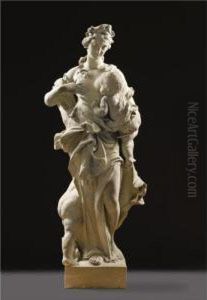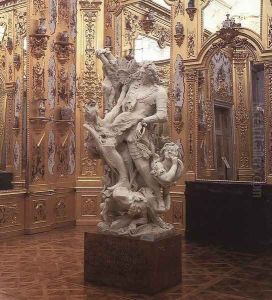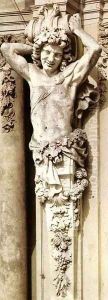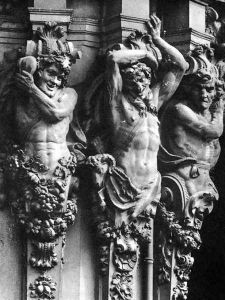Balthasar Permoser Paintings
Balthasar Permoser was one of the most prominent sculptors of the late Baroque period in Central Europe. Born on August 13, 1651, in Kammer bei Waging, Electorate of Bavaria (now in Germany), he began his artistic journey as an apprentice in Salzburg and later in Vienna. Permoser's skills quickly developed, and his reputation as a talented sculptor began to spread.
In 1675, seeking to broaden his artistic horizons and refine his craft, Permoser traveled to Italy, which was the epicenter of Baroque art. He spent significant time in Venice and Rome, where he studied the works of the Italian masters and was particularly influenced by the dynamic sculptures of Gian Lorenzo Bernini. While in Italy, Permoser worked on various projects and became known for his ability to blend dramatic expression with intricate detail.
Eventually, Permoser settled in Florence, where he worked for the Medici court. His most famous work from this period is the 'Four Elements' series at the Palazzo Pitti. In 1690, he was invited to Dresden by the Elector of Saxony, Johann Georg III, which marked the beginning of his most productive and influential phase. Permoser's move to Dresden exposed him to new patronage and he became a central figure in the development of the Dresden Baroque style.
Among his notable works in Dresden is the sculptural decoration of the Zwinger Palace, a masterpiece of Baroque architecture. Permoser's contribution to the Zwinger includes the representation of mythological scenes and figures that capture the grandeur and intricate detail characteristic of the Baroque aesthetic. He also created the famous 'Moor with Emerald Cluster' sculpture, which is considered one of his masterpieces and reflects his virtuosity in handling different materials, such as marble, bronze, and precious stones.
Permoser's work is characterized by a vivid expressiveness and a mastery of form and detail. His sculptures often feature dynamic poses, elaborate drapery, and emotional intensity. He was also skilled in smaller-scale works, creating ivory carvings and church statuary that showcased his versatility as an artist.
Balthasar Permoser's influence extended beyond his own lifetime as he played a crucial role in establishing a distinctive Baroque style in the German-speaking regions. His legacy is preserved in the numerous sculptures and architectural features that adorn Dresden and other European cities. Permoser continued to work until his death on February 18, 1732, in Dresden. He remains a celebrated figure in the history of Baroque art, with his works continuing to be studied and admired for their technical brilliance and artistic beauty.



